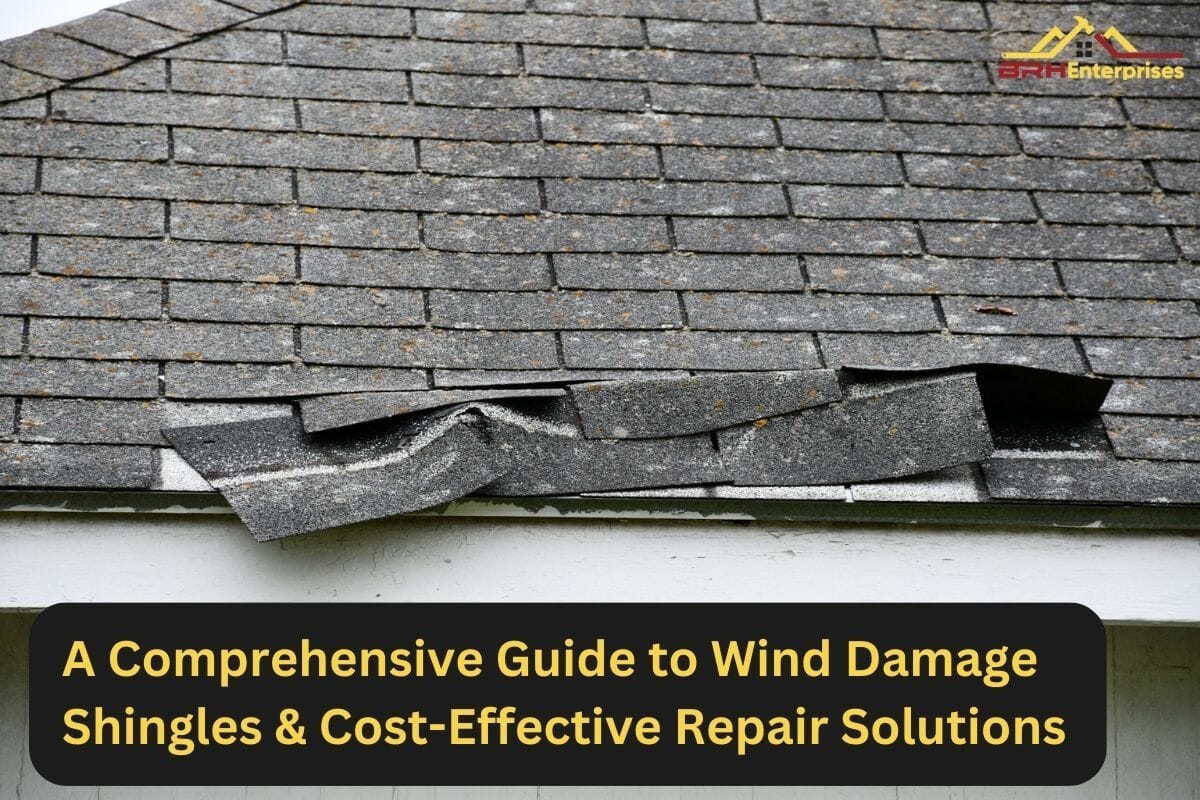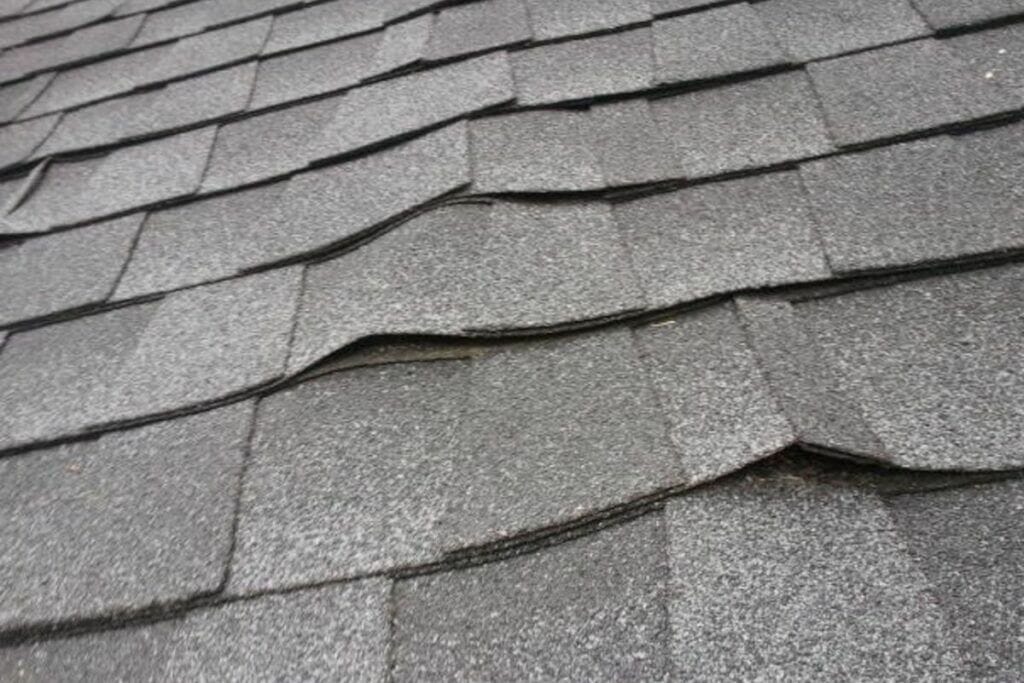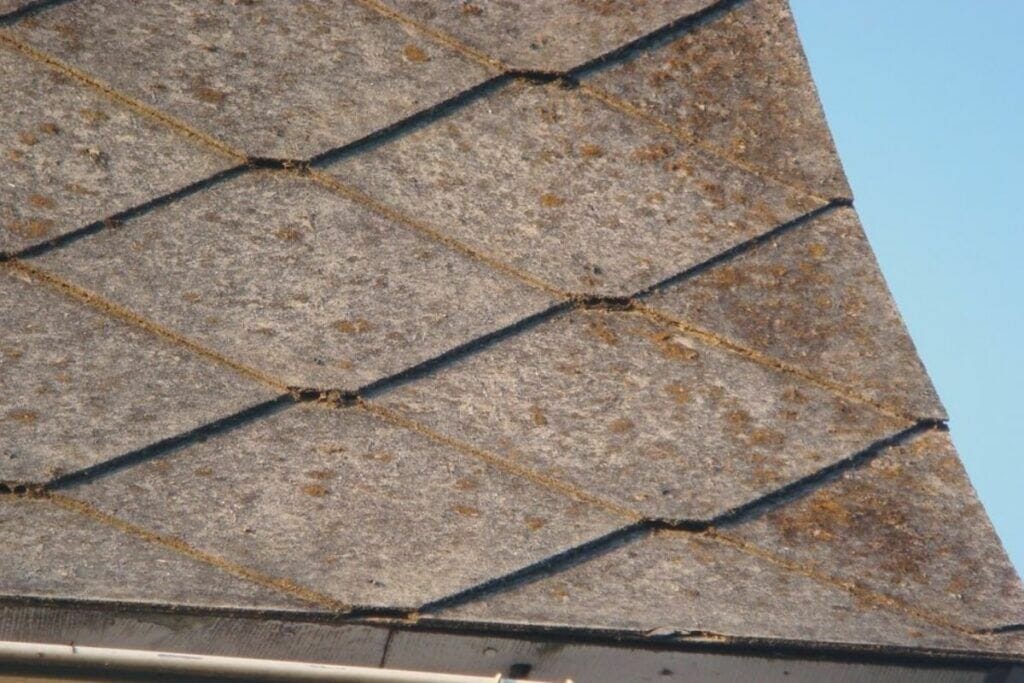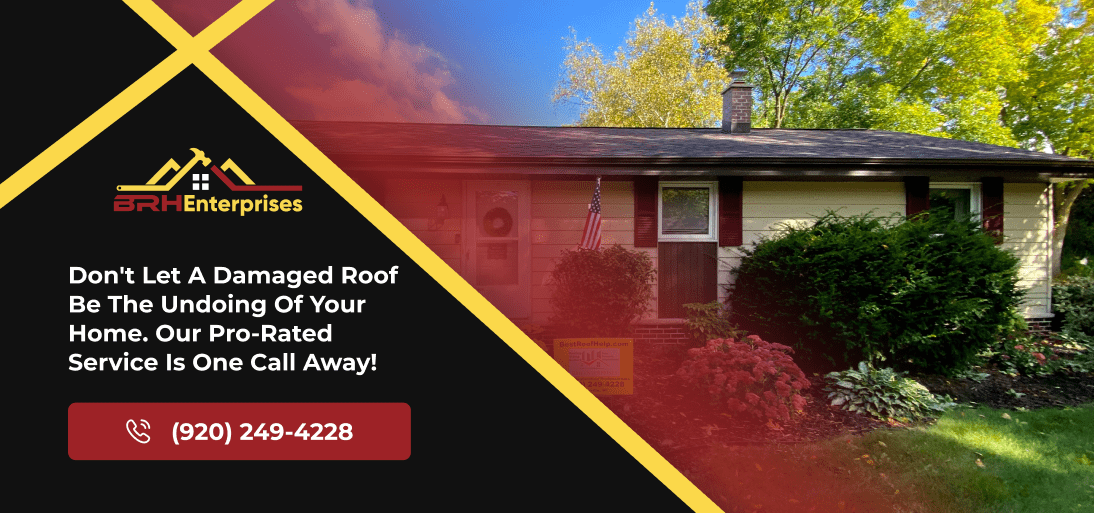A Comprehensive Guide to Wind Damage Shingles & Cost-Effective Repair Solutions
Estimated Reading Time : 6 Min.

Your roof is your home’s first line of defense against the elements and weather events, but when powerful winds strike, it can take a toll on your shingles. In this comprehensive guide, we will explore the various ways wind can damage your shingles and provide you with cost-effective repair solutions to ensure your roof remains resilient.
Understanding Roofing Shingles
Shingles are a type of roofing material found on the outermost layer of your roof and act as a protective shield against the elements. They are individual overlapping tiles or pieces that are made from various materials, including asphalt, wood, metal, slate, or clay. They are strategically installed in layers, with each row overlapping the one below it. This installation method creates a seamless appearance and watertight barrier. In addition, certain types of shingles, like asphalt shingles, are coated with granules, which makes them more durable and resilient against weather impacts.
The Importance of Roofing Shingles
1. Weather Protection
Shingles act as a barrier against rain, snow, hail, and wind. They prevent water from infiltrating your home, which could lead to structural damage, mold growth, and costly repairs.
2. Energy Efficiency
Properly installed and insulated shingles help regulate your home’s temperature. They reflect sunlight and prevent excessive heat from entering your home during hot summers, reducing energy costs.
3. Curb Appeal
Shingles are a valuable addition to your home. They add to your home’s curb appeal and make it more aesthetically pleasing. There are generally three types of asphalt shingles: 3-tab shingles, architectural, and luxury shingles. The choice of shingle material, color, and style can enhance the overall look of your property.
4. Longevity
High quality shingles can last for decades, providing long-term protection for your home. Investing in durable shingles can extend the lifespan of your entire home. Asphalt shingles are widely used across the U.S. and provide your roof with strength, durability, and longevity.
Types of Wind Damage To Shingles
1. Shingle Uplift

Shingle uplift is an obvious sign of wind damage on your roof. The wind can get under your shingles and lift them off the roof deck. You’ll see visible gaps, and the roof structure will be exposed. If you find shingles in your yard, it’s a major sign your roof needs repair and a professional inspection.
In addition, shingle lifting is an open invitation for water to seep into your roof. The water intrusion can rot the roof deck, making it fragile and more prone to damage. Therefore, it’s crucial to act fast to seal the lifted shingles or replace them.
When the wind lifts up your shingles, it can also cause them to hit against your roof. This is called shingle flapping, and though it can be unsettling, it’s also a warning sign. Shingle flapping can increase the wear and tear on your roof, so it’s a good idea to call a roofing company the next time you hear it.
Also Read: Why Do My Roof Shingles Keep Lifting?
2. Shingle Creasing
Shingles may experience bending under the high pressure caused by wind. This leaves them with visible creases.
Creased shingles don’t just impact your roof’s looks, they weaken the roof deck and become a reason for more extensive damage. Moreover, weakened shingles can mean leaks and water intrusion. So if you spot any shingle creases, don’t just shrug them off. Call a roofing expert to check things out.
3. Shingle Erosion

Wind doesn’t always crack and crease shingles, it can also rob your shingles of their protective layers. Wind driven debris like sand, dirt, and tiny stones can scratch the granules on your shingles. Granules add a protective and decorative layer to the shingles, and without them, your roof is more susceptible to damage. Plus, a lack of granules can age the look of your roof, making it appear older and less appealing.
To prevent shingle erosion, clean your roof regularly and inspect it to maintain its aesthetic appeal and protective layer.
4. Shingle Cracking

During a roof inspection, apart from creased and lifted shingles, you may also notice cracked or broken shingles. High winds from tornadoes or hurricanes can damage your shingles. The cracked shingles are no longer protecting your home, rather, they expose the roof deck to potential problems.
You can check for cracked shingles by getting up and visually inspecting your roof. It’s important to replace the broken shingles before your roof experiences more extensive damage.
Reasons Behind Wind Damage To Shingles
While high winds are the obvious culprit for wind damage to shingles, some factors, such as shingle quality, roof design, roof pitch, and installation quality, also play a significant role.
1. Wind Speed
The most apparent factor in wind damage to shingles is the wind speed itself. The stronger the wind, the greater the potential for damage. Shingles are designed to withstand a certain range of wind speeds, but when gusts exceed this threshold, it can mean trouble.
2. Shingle Quality
The quality of the shingles you choose plays a pivotal role in their ability to resist wind damage. High quality shingles, such as architectural, laminated, or luxury shingles, are crafted to be more durable and wind-resistant, with better adhesive properties that keep them securely in place.
3. Roof Pitch
The pitch or slope of your roof is another factor influencing wind damage. Low-slope, or flat roofs, tend to experience less wind uplift because the wind has a harder time getting beneath the roofing materials. On the other hand, roofs with a steep pitch are more susceptible to wind related damage.
4. Roof Design
The design of your roof can impact its vulnerability to wind damage. Complex roof designs with multiple peaks, angles, and intersecting planes can create areas where wind can get underneath the shingles more easily.
5. Installation Quality
Even the best shingles won’t perform as expected if they are not installed correctly. Improper installation can leave gaps, weak spots, or inadequate sealing, making your roof more susceptible to wind damage.
To minimize this risk, hire experienced and reputable roofing contractors. They have the expertise to ensure that your shingles are installed to withstand strong forces of wind.
6. Maintenance
Regular roof maintenance is your best defense against wind damage. Over time, wear and tear can weaken shingles and their adhesive properties. Damaged or missing shingles should be replaced promptly to maintain the roof’s integrity.
Additionally, cleaning your roof and gutters to remove debris can prevent wind driven materials from damaging your shingles during a storm.
Cost Effective Repair Options For Wind Damaged Shingles
1. DIY Repairs
If the damage is small, like a shingle lift or small tears on a few shingles, and you’re comfortable with DIY projects, you can tackle the repairs yourself. Simply obtain roofing cement or adhesive from your local hardware store and apply it beneath the lifted shingle to ensure a secure seal. For even smaller tears or cracks, roofing adhesive can be used to seal them.
2. Shingles Patching
Patching is another viable option if you have only a few damaged shingles and want to keep costs in check. To patch damaged shingles, you’ll need matching replacement shingles. Carefully remove the damaged shingles and any nails or adhesive underneath. Then, slide the replacement shingle into place and secure it with roofing nails or adhesive.
3. File An Insurance Claim
If the wind damage to your shingles is extensive and beyond your budget, filing an insurance claim can provide financial assistance. Begin by reporting the damage to your insurance provider, documenting it with clear photographs and detailed descriptions. Obtain repair estimates from reputable contractors for the insurance company’s review.
Contact Your Local Roofing Professional To Repair Wind Damaged Shingles In Wisconsin
If you see signs of wind damage to the shingles on your roof, it’s time to consult a roofing professional to mitigate and repair the damage. If your home or office’s roof has been damaged by high winds or storms, contact BRH Enterprises in Wisconsin. Call us today at (920) 249-4228 to repair your wind damaged roof.


